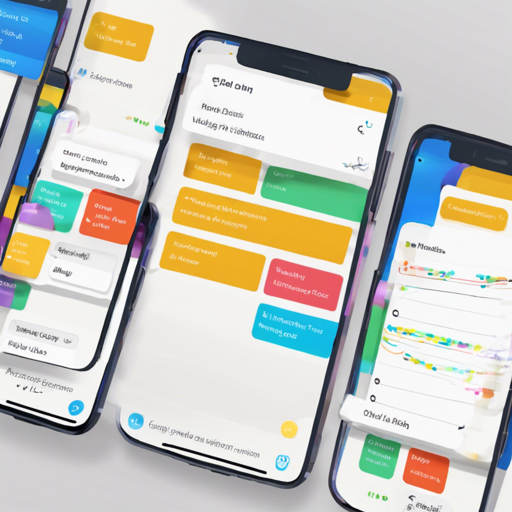Welcome to the world of Flutter, where you can create stunning applications with ease! In this guide, we’ll walk through how to create a simple and beautiful to-do list app, perfect for tracking your daily tasks. Whether you’re a beginner or an experienced developer, you’ll find something useful here.
Getting Started with Your To-Do List App
The “One Day List” is a simple app designed to help you manage your daily plans effectively. Let’s break down the steps to set up this app for both users and developers.
User Introduction
Colorful Themes
One of the unique features of this app is its ability to switch between various theme colors. The app offers six default themes along with the option for a custom theme color.
Colorful Task Icons
Each task can be accompanied by an icon that you can customize using the many **Material Design** style icons provided by Flutter. Not only does this add a creative flair, but it helps in visually organizing your tasks better.
Diverse Custom Combinations
The app includes a variety of customization options. For example, you can adjust the content displayed at the homepage slider and other settings according to your preferences.
Done List
Once a task is completed, it’s moved from the homepage to the ‘done list’ section. This provides you a clear overview of what you’ve accomplished.
Developer Introduction
If you’re a developer interested in Flutter, this project will be a fantastic start! Here’s an overview of the main components and package dependencies used in this project:
Packages Used
- dio: for network requests
- shared_preferences: for local storage
- provider: for state management
- test: for unit testing
- carousel_slider: for slide control
- …and many more!
Understanding the Project Structure
The architecture of the project resembles the MVP pattern used in Android, utilizing the Code Provider framework for state management. Here’s how it’s structured:
View Layer
The view layer consists of various StatelessWidget pages wrapped by ChangeNotifierProvider.
Model Layer
It processes data and includes various model classes that inherit from ChangeNotifier.
Logic Layer
This layer handles the logical operations without saving any data.
Code Explained with an Analogy
Imagine building a colorful display of cupcakes (your app). Each layer of frosting (the architecture) represents a different functionality, with the base (View) presenting the delightful look of your cupcake. Each flavor (Model) offers a distinct experience, while the arrangement of cupcakes (Logic) ensures they complement each other beautifully. Just like our code, which works together coherently to serve the user delightful results!
Troubleshooting
If you encounter issues with your Flutter version, ensure it’s updated to at least v1.9.1+hotfix.6. If you are running a lower version, some dependencies might not function properly, and you may need to downgrade certain packages accordingly. Here’s what to check:
- Ensure the version of Flutter you’re using is compatible.
- If issues arise, review the necessary modifications for older versions of packages.
For more insights, updates, or to collaborate on AI development projects, stay connected with fxis.ai.
Conclusion
At fxis.ai, we believe that such advancements are crucial for the future of AI, as they enable more comprehensive and effective solutions. Our team is continually exploring new methodologies to push the envelope in artificial intelligence, ensuring that our clients benefit from the latest technological innovations.
So, unleash your creativity and start developing your to-do list app today!

